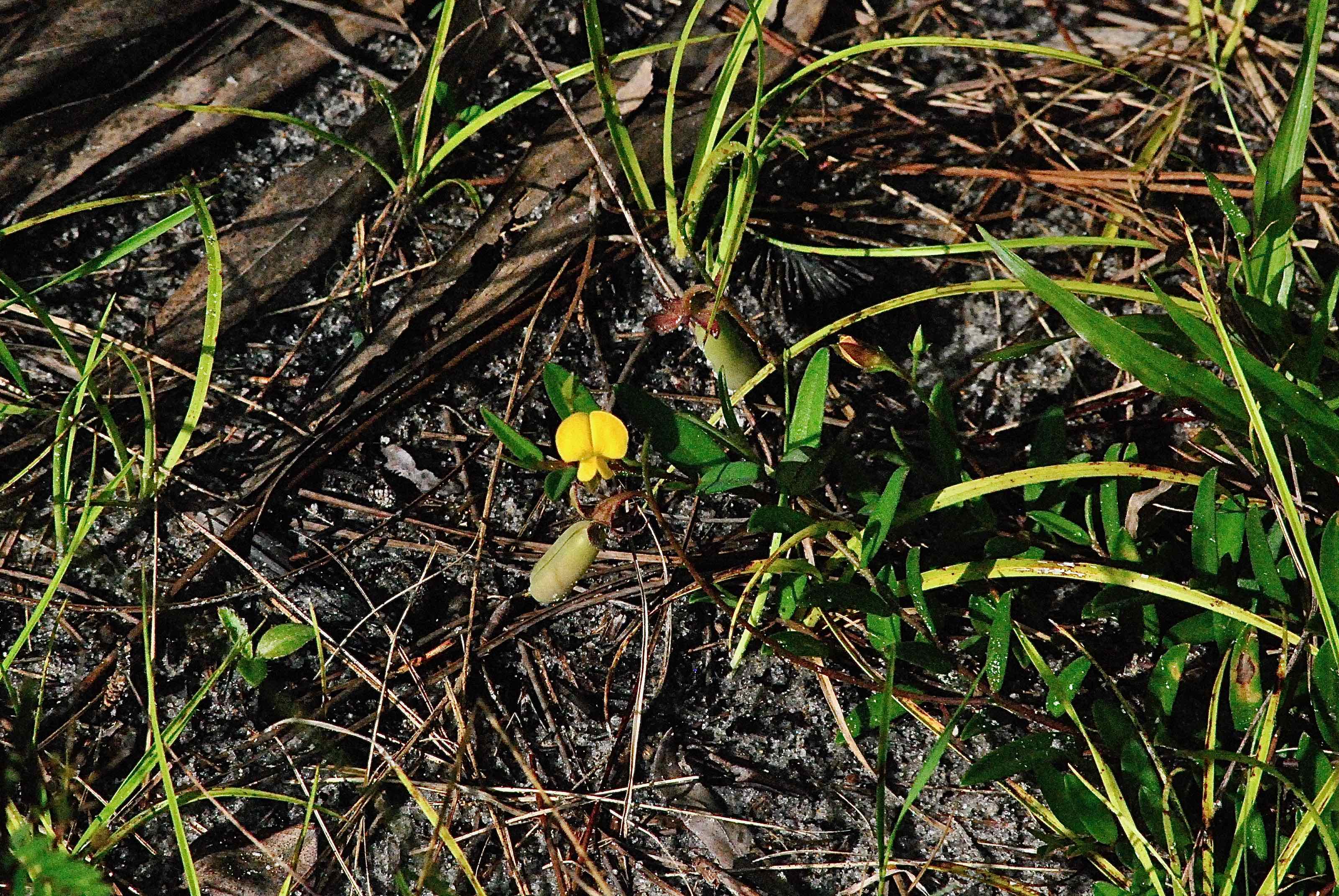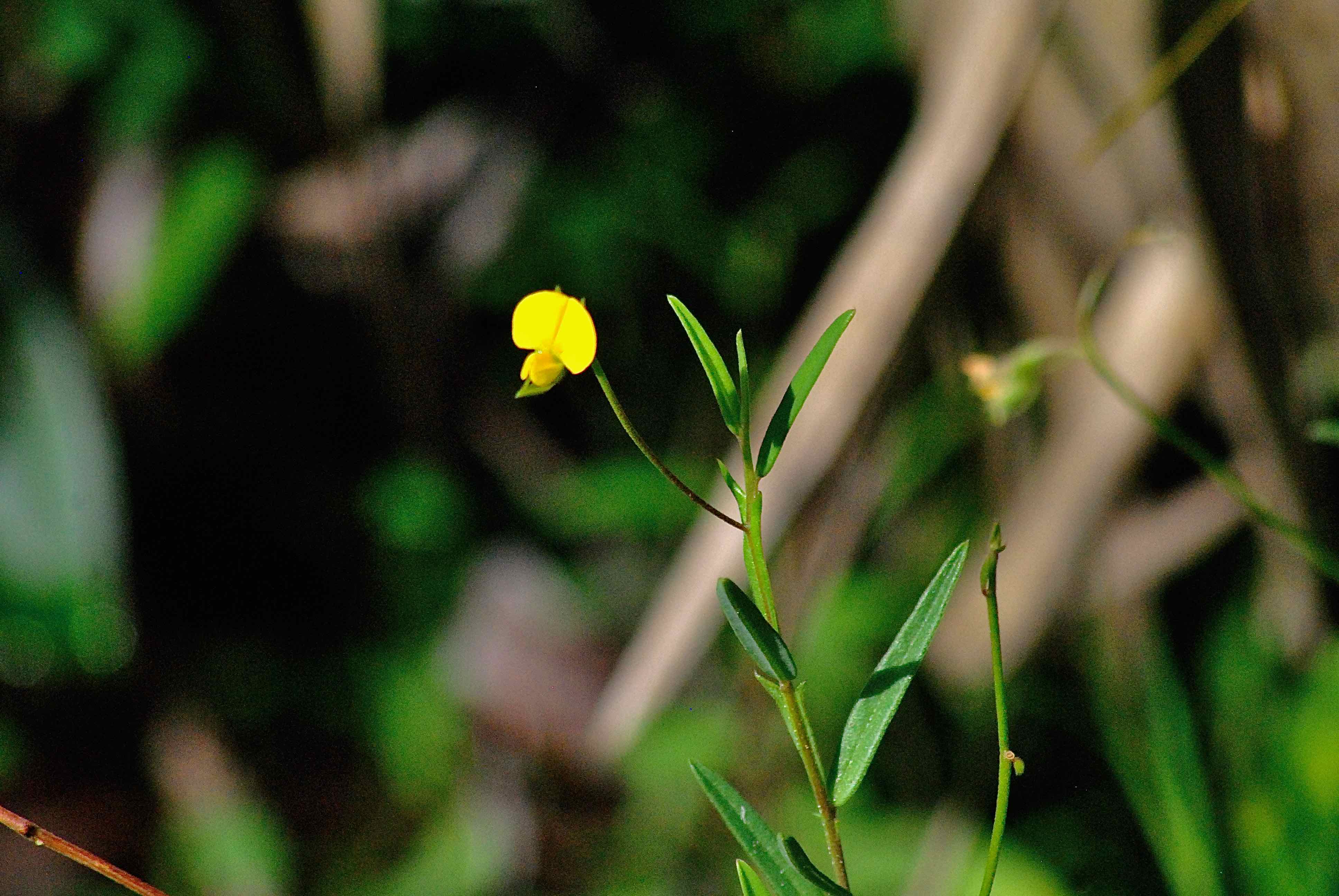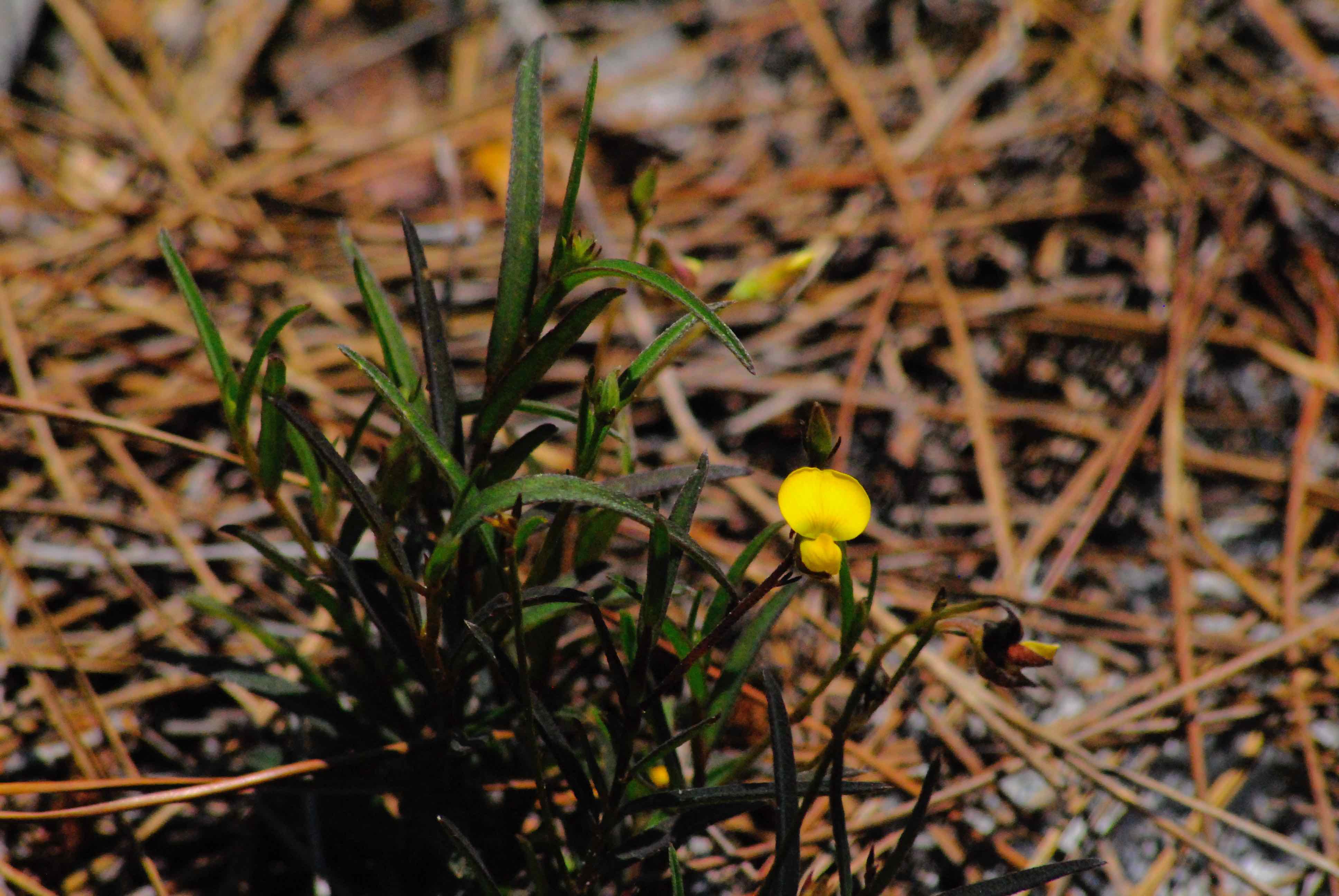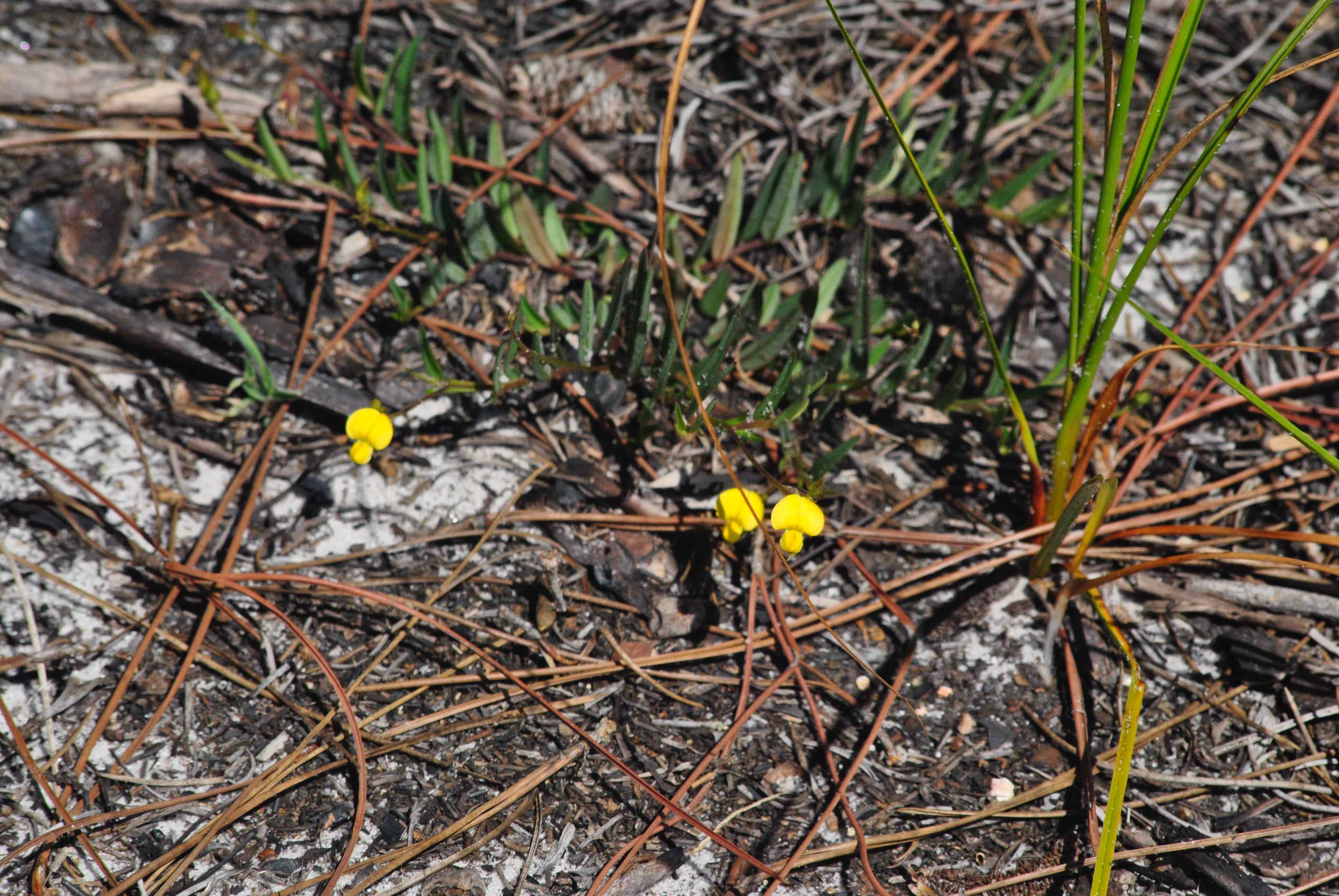
Jones/Hungryland Wildlife and Environmental Area, Indiantown, Martin County, in September 2015. Others at Military Trail Natural Area, Deerfield Beach.
Strange name. Cool little flower. Rabbit bells, Crotalaria rotundifolia, is a Florida native found in pinelands and other "upland" habitats.
It is one of four members of the Crotalaria genus that are native to Florida and one of two commonly seen in this part of the Sunshine State. It's found in all but two of the 67 counties, both of which are in the Panhandle. Rabbit bells grows along the Atlantic Coast states as far north as Maryland and along the Gulf Coast to Louisiana. Its native range extends into Arkansas, which has labeled the plant (and all Crotalaria species) as a noxious weed. Maryland has classified rabbit bells as endangered. It's found in parts of the Caribbean, Mexico and Central America. Despite the scarcity in Maryland, rabbit bells is globally secure as a species.
It is a ground hugger, maxing out at about six inches tall. Rabbit bells can be upright or trailing along the ground. The leaves are simple and somewhat rounded, although they can vary in shape quite a bit. In the photos on this page, they're more linear, but we've seen oval-shaped leaves as well. They are arranged alternately along the stem. Rabbit bells produces bright yellow flowers about a half-inch long that, in turn, produce fat, pea-like seed pods that are characteristic of Crotalaria. Shake the pod and the seeds rattle.
It is a host plant for the ceraunus blue butterfly and rattlebox moth, aka bella moth, which uses other members of Crotalaria as hosts as well. The rattlebox is one of the few showy moths in Florida and depends on chemicals called pyrrolizidine alkaloids that the Crotalaria species produce for their bright colors, which also happens to be its defense system. It's similar to the relationship between monarch butterflies and milkweeds.
One interesting note about rabbit bells and the rattlebox moth: The larvae of the moth will penetrate the pods of crotalaria species and eat the seeds, taking in the alkaloids.
Rabbit bells and other native crotalaria also have evolved to produce harder seed pods that resemble peanut shells, which are more difficult for the moth larvae to penetrate. And if they do get inside, the seeds are more watery, less nutritious and have less of the toxins the moths desire than the exotics. The exotics are an easier target, which is probably the reason why the numerous exotic crotalaria have yet to become the invasive pests many fear. The moths keep the plants in check.
Seminoles made treatment for sore throat from the seed pods. It is cultivated, used in natural landscapes, wildflower and butterfly gardens.
Back to the name, rabbit bells. We could not find an explanation for it. One guess: the flower somehow resembles a rabbit, with its big ears. Or perhaps the linear leaves look like rabbit ears. There is another native crotalaria species found along the Lake Wales Ridge north of Lake Okeechobee that some call Avon Park harebells or Avon Park rabbitbells.
Rabbit bells has something like nine alternative scientific names, or synonyms. That many names is usually the result of variations in the plant's form that causes botantists to think they're seeing something different from what they expected and declare a new species or subspecies when what they're really seeing is variations in the same old, so to speak. The accepted name is C rotundifolia or round leaf. Variations in the shape of the leaves no doubt were part of the reason for many of them.
Other common names and spellings: prostrate rattlebox, rabbitbells and rabbit-bells. Rabbit bells is a member of Fabaceae, the pea family.
Click on photo for larger image
Links for Rabbit Bells



